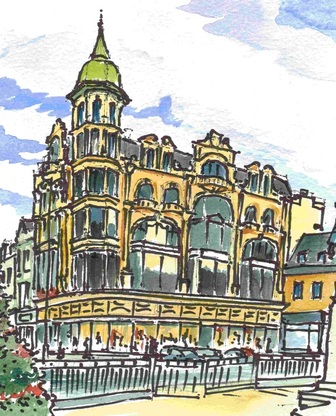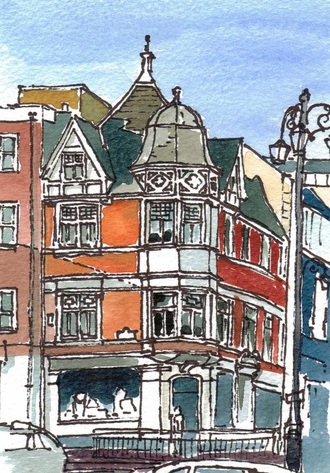Edwardian Exuberance
|
The twentieth century opened in prosperous times. However, while the population and city continued to expand, the port started to feel the impact of better train links and industry faced increased competition from other areas. This led, with time, to increased pressure on wages and a rise in unemployment.
Austin’s of the Diamond is perhaps the most striking example of the confidence of the period in the city. Constructed using a steel frame, and therefore able to have wide expanses of glazing, it has a highly decorative façade ordered by tall, garlanded Ionic columns supporting smaller Corinthian columns with arched windows and curving balconies between. It has a tall tower at the corner capped with a copper cupola in the style of a German helmet with spike on top. Diamond Chambers, is also from the period and has a corner tower. It is more influenced by the Arts and Crafts movement than Austin’s however with its emphasis on simple detail and fine craftsmanship. The building has a good turret and casement windows. Around the corner, on Bishop Street, the Northern Counties Club, like Austin’s, has large columns ordering a façade of bay windows, this time they are Corinthian but this is a much more controlled composition. At ground level, iron work to the street has the typical flattened rose detail often found in Arts and Crafts buildings. |
|



